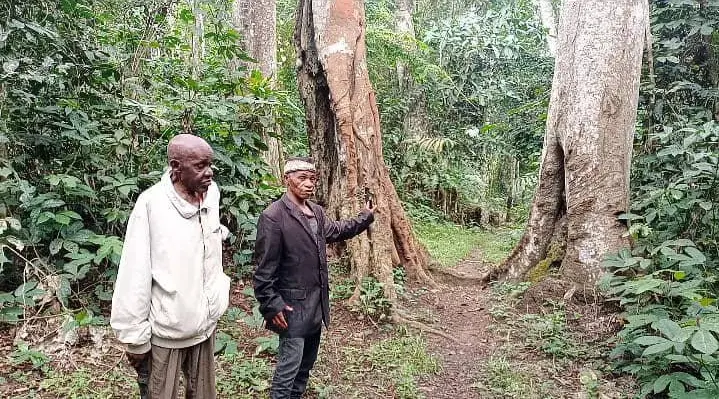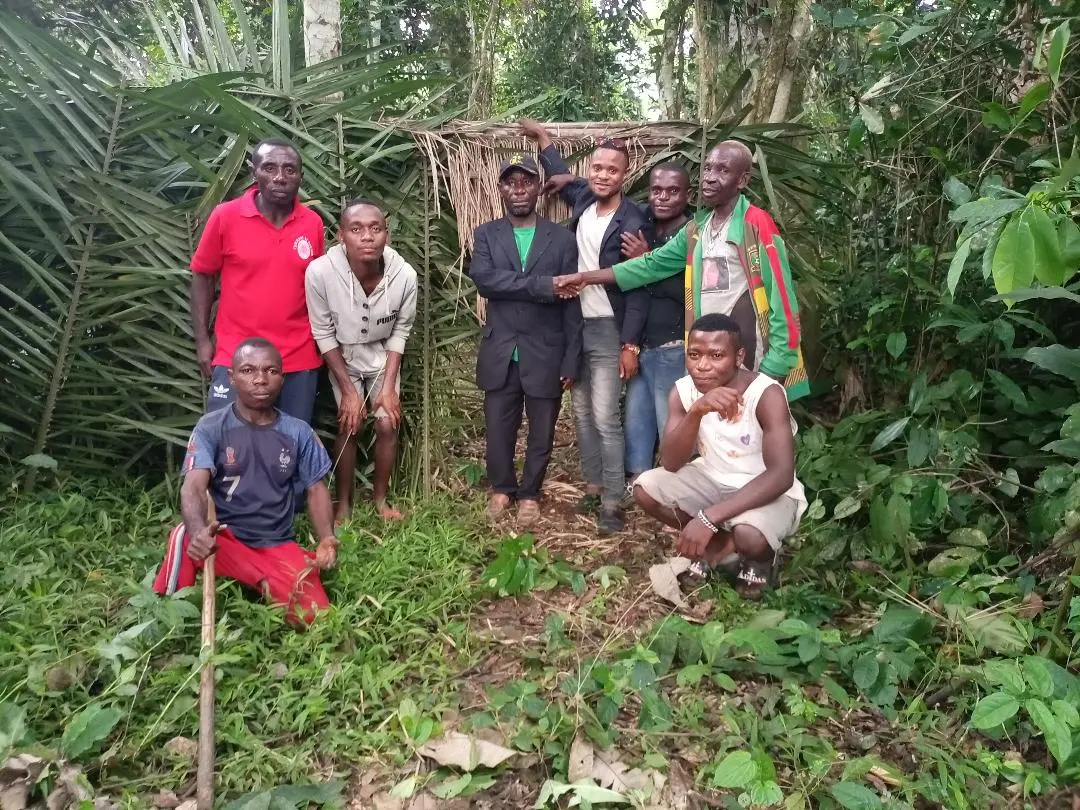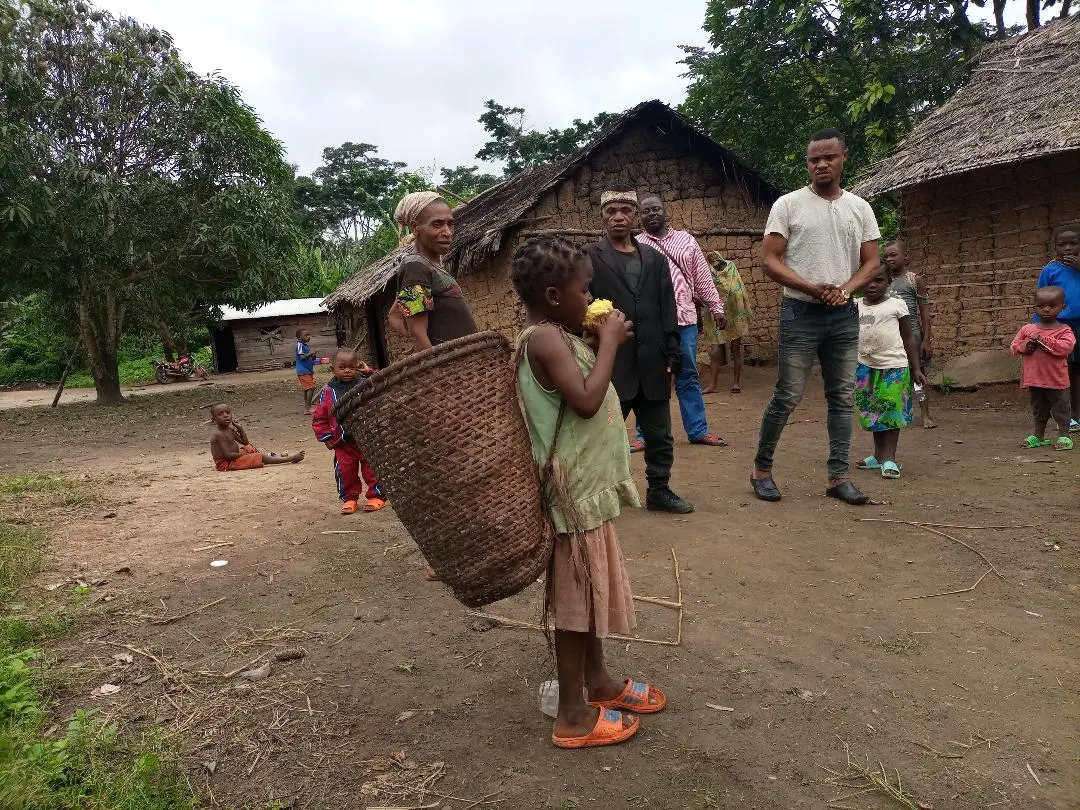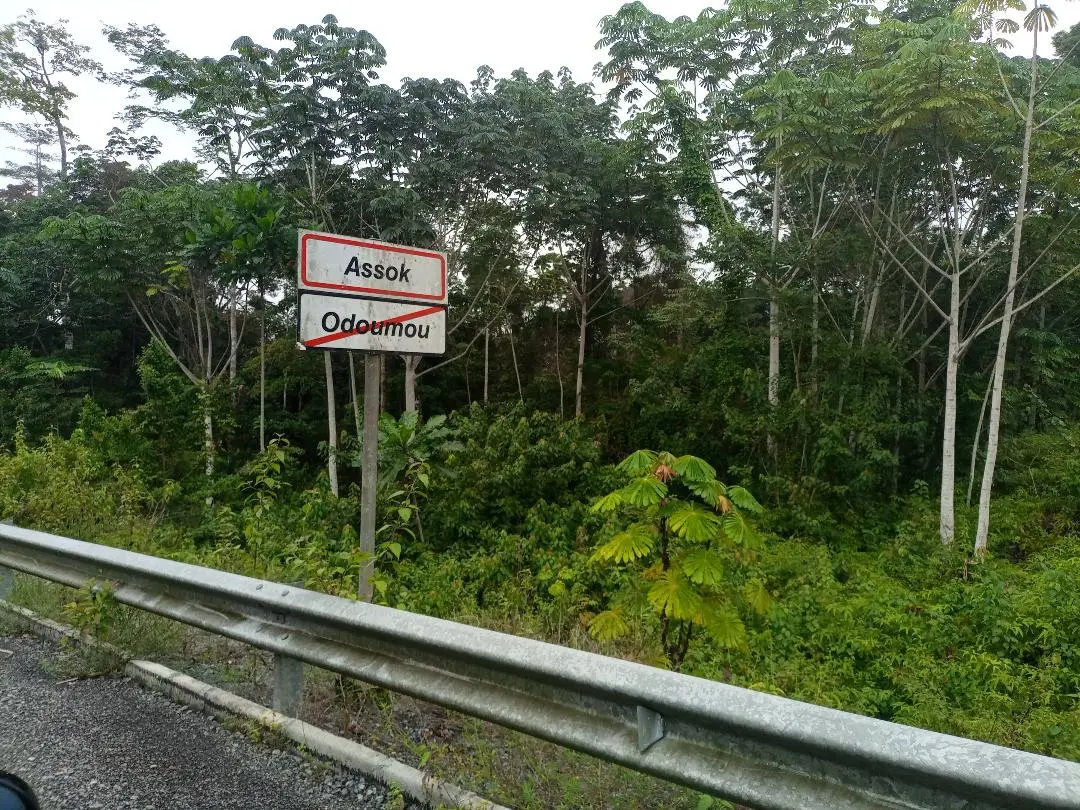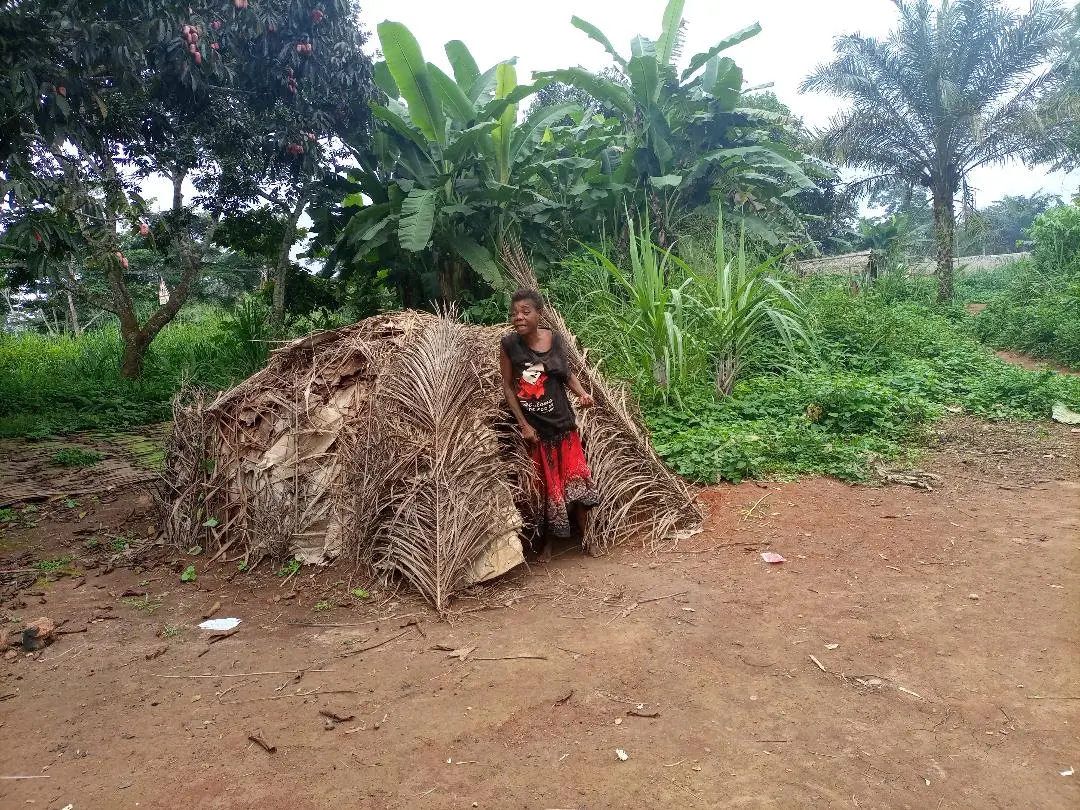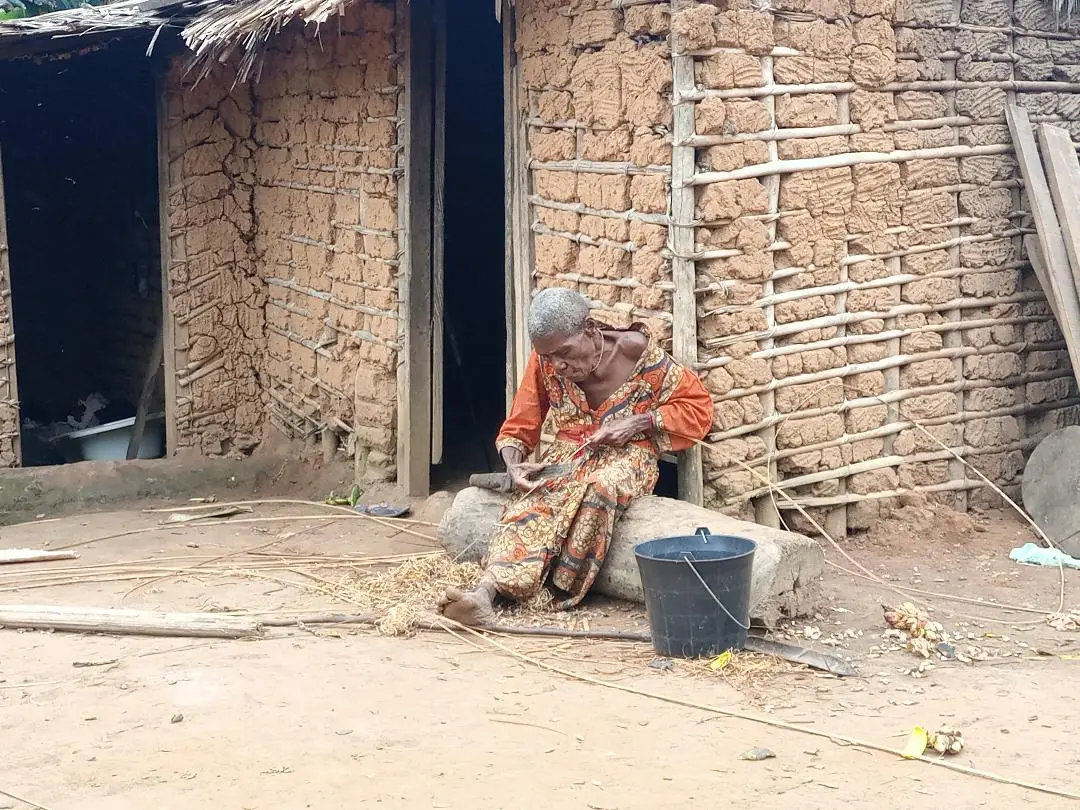This story excerpt was translated from French. To read the original story in full, visit ENQUETEDESOLUTIONS. You may also view the original story on the Rainforest Journalism Fund website here. Our website is available in English, Spanish, bahasa Indonesia, French, and Portuguese.
If this people were to disappear, a whole heritage, an ecosystem would go with it. The way of life of the Indigenous forest peoples, better known as "pygmies," is fundamentally linked to this habitat. In Cameroon, they are found mainly in the eastern and southern regions, which, according to the Ministry of Forests and Wildlife, contain the largest part of the national forest cover, estimated at approximately 22 million hectares, or nearly 46% of the country's surface area.
Like the sacred forests of the Western region (Le Messager n° 6050 of Wednesday, July 06, 2022), the sacred forests of the Pygmy peoples are threatened. Several factors, including the State, have been identified as the cause of this unbridled degradation. This is a real aberration with regard to the national and international commitments of the State for the preservation of biodiversity and the fight against climate change. It is important to note, the negative impacts of this mess are reckoned on the sociological as well as ecological level.

As a nonprofit journalism organization, we depend on your support to fund journalism covering underreported issues around the world. Donate any amount today to become a Pulitzer Center Champion and receive exclusive benefits!
For the sake of humanity, the forests of the South must be saved. Intimately linked to the forest, the Indigenous peoples are powerless to witness its disappearance due to illegal exploitation. They demand the institutionalization of their own chieftaincies and include the notion of territory to preserve the forest as a guarantee of the protection of their cultural identity and therefore of biodiversity. This is a concern well identified by Dr. Samuel Nguiffo, an expert in this field. In the interview on this issue, the executive secretary of the Center for Environment and Development (CED), joins the so-called endogenous solutions likely to restore the disturbed balances and made consequent proposals. These are on some levels the recommendations of Dr. Junelle Makemteu for the forests of the West.
